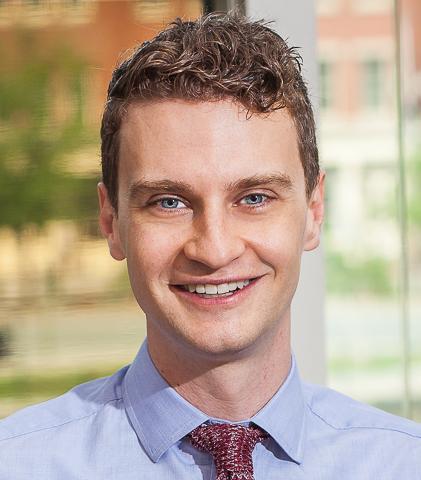
-
Categories
-
Tags
Health Equity + Long COVID: A Conversation with Dr. Brandon Marshall
Brandon Marshall, PhD, is a Professor of Epidemiology at the Brown University School of Public Health, and the Founding Director of the People, Place and Health Collective (PPHC) at Brown University.

These answers have been modified and combined for length and clarity.
What does health equity mean?
Health equity is about ensuring that everyone is able to live their most fulfilling and healthy life. Each individual faces their own medical challenges based on their unique identities and circumstances so creating a health system which accommodates these differences is extremely important. A one-size approach does not fit all.
Where do health disparities come from?
Health disparities arise from systems of oppression within our society, whether it be structural racism, lack of access to healthcare and education, financial exclusion or the neighborhood you live in. These differences in access to resources lead to societal inequity, making certain populations (such as minorities, lower-income families or those with disabilities) more vulnerable when it comes to accessing affordable and high-quality healthcare. It is important to recognize that being categorized as part of a vulnerable population group is not an inherent state but something that different societal mechanisms create and therefore is within our control to change.
What can we do to combat health disparities and subsequent inequality?
There are two main strategies for combating health disparities. The first strategy involves the development and implementation of community-led processes. Taking a bottom-up approach is essential. This can be done through community leader engagement, whether it be through religious leaders or business owners as they are embedded in the community and have established trust with the population. As another example, businesses in the community need to take responsibility for creating safer working conditions for employees, providing adequate PPE, affordable health insurance and accommodations when employees become unwell.
At the same time, it is important to also work from the top down by looking at policies, laws and regulations and how these can be adapted and developed to reduce and eliminate health disparities. Making institutional changes is a necessary part of preventing health disparities but needs to happen in tandem with tackling ongoing problems from the ‘ground up’.
What does the Long COVID inequalities landscape look like?
Inequalities in Long COVID really stem from inequality in initial virus infection rates, as Long COVID cases are compounded by COVID-19 infections. The most vulnerable populations throughout the pandemic have been essential workers, people working in the informal sector, people who have not been able to work from home, or live in poor housing conditions, and those with no access to healthcare or health insurance. Many of these people may have less access to PPE or vaccinations, furthering their possibility of exposure and their vulnerability.
The reality is that COVID-19 is an airborne disease and thus we should all be equally susceptible. However, the fact of the matter is that your social class, profession, financial circumstances and geographic location have an impact on your vulnerability and the pandemic has shined a light on existing inequalities within our society.
How can Long COVID patients advocate for themselves, in particular if they feel that they are being left behind?
For many people the focus is still on dealing with initial COVID infections and the ever-changing variants that are out there. We are still learning about the extent of Long COVID and are not yet feeling the full impacts in the workplace and in society at large. However, the number of patients experiencing Long COVID is likely to grow in the future. The magnitude of the problem and the amount of people being affected should keep the issue at the forefront of research.
It is essential to create safe spaces for discussion and advocacy for marginalized Long COVID patients. The continued work of programs such as the Rhode Island Health Equity Zone Initiative is extremely important, as these types of organizations bring together the community and help identify gaps in care and areas where education, support and funding are most crucially needed.
Policy makers, business owners, health insurers and medical professionals must continue to be educated on what Long COVID is and how to best help people. Patients often blame themselves and their actions for suffering from illnesses such as Long COVID, in particular among stigmatized populations so creating a safe space for patients is extremely important to not perpetuate these issues and ensure that people seek help.
People are often misinformed about COVID-19 and other public health crises. In your opinion, does misinformation exacerbate health inequities?
Misinformation is a big problem when it comes to COVID-19 and often perpetuates the problem of health disparities. Misinformation can incorrectly characterize and ‘blame’ different groups for their health problems, and we need to be vigilant and push against this discourse by ensuring that information is correctly shared.
We thank Dr. Marshall for his time and for the continued impact he is having on the fight against healthcare inequality.
For inquiries related to the Long COVID Initiative, please contact [email protected]


